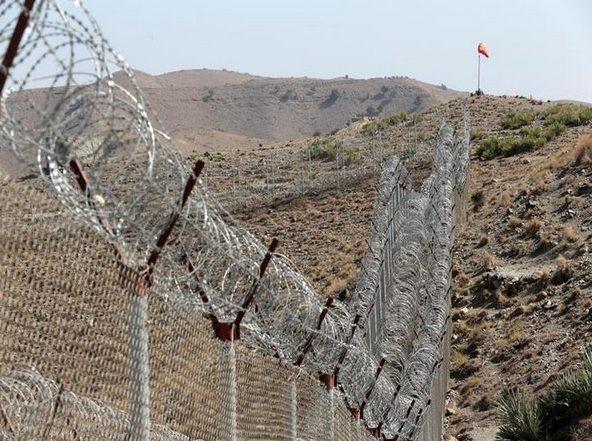The bilateral relationship between Afghanistan and Pakistan has always been under duress. A major point of contention between the two neighbors is the status of a colonial legacy along the Durand Line, cutting through the Pashtun-dominated tribal areas.
Between 1809 and 1947, Afghan rulers and British officials signed numerous agreements and treaties. However, the one treaty that keeps resurfacing is an 1893 treaty (or the so-called Durand Treaty) between the Afghan ruler Amir Abdur Rahman Khan and the British Indian Foreign Secretary Sir Mortimer Durand.
To put into perspective the dispute over the boundary, it is imperative to understand the circumstances that led to the signing of the Durand agreement and paved the way for the promulgation of the Durand Line.
The Conflict Details
Both countries have never experienced a honeymoon period as a result of dealing with a disputed border, militants fleeing across a hazy borderline, and accusations of stirring up instability in each other’s states of affairs. The border between two states has a troubled past and continues to be a source of conflict today.
Although the UN recognizes the Durand Line as a physical boundary, the Afghan government unilaterally rendered all earlier Durand Line agreements null and void. On July 26, 1949, they declared the Durand Line to be an imaginary line. However, pursuant to the international law principle of “Uti possidetis juris”, Pakistani governments have consistently argued that the Durand Line is the actual border between the two countries.
The Afghans disagreed with the Durand Line Agreement because it does not attempt to physically split the border; instead, it defines distinct zones of influence. The first agreement’s Articles IV and V, as well as subsequent agreements, made it very clear that the border was to be marked, and Afghanistan regularly received subsidies, recognizing it as a de facto border. This is contrary to Pakistan’s position.
Elite Pashtuns in Afghanistan contend that the line divides their tribes and that the 21st century border administration will jeopardize their way of life. Pashtuns had only two options during Partition: they could either join Pakistan or India. As a result, Pashtun leaders have repeatedly used the violation of the “right to self-determination” of Pashtuns on both sides as evidence to dispute the legitimacy of the line.
Today, Pashtuns are not only clustered around the Durand Line, but they are possibly the largest tribal society in the world. With a population of more than 42 million people in several countries, Pashtuns comprise an estimated 60 distinct tribes with approximately 400 sub-clans. They are not just concentrated around the Durand Line. Even the Pashtuns who reside along the Durand Line are divided into numerous distinct tribes and clans, contrary to popular belief.
As a landlocked nation, Afghanistan relies on Pakistan for the majority of its needs in terms of subsistence. Each day, thousands of individuals pass through the border crossings at Chaman and Torkham, including traders, legal immigrants, employees of NGOs, and NATO servicemen. In addition, thousands of unlawful crossings occur every day on both popular and less-popular routes.
These Afghan nationals have lived in Pakistan for decades. They were provided refuge during the Soviet invasion of Afghanistan, and now they have no desire to return home. Pakistan paid a huge price for its generosity in providing its territory to Afghan refugees during a difficult time. In return, Pakistan was blessed with the gifts of border clashes and Taliban insurgents.
Terrorist safe havens and cross-border strikes have grown in importance during the past few years. Since 2010, the Afghan provinces of Kunar and Nuristan have served as sanctuaries and hiding places for TTP terrorists. The foreign combatants, especially Uzbek and Chechen groups, were also using this border to enter Pakistan and commit terrorist acts.
The presence of Indian consulates along the border is further contributing to destabilizing Pakistan by providing material and financial support to terrorists and sub-nationalist groups.
To put into context the dispute over the border line, it is crucial to understand the circumstances that led to the signing of the Durand Line agreement and paved the way for the promulgation of the Durand Line. The Line is regarded in Afghanistan as a “historic mistake,” a relic of British colonialism that the Afghanis reject, regardless of who is in power. After overthrowing the US-backed government in August 2021, the Taliban reaffirmed their stance, claiming that the fencing has divided families. The group’s commander, Mawllawi Sanaullah Sangin, reaffirmed that they won’t accept any new attempts to fence the’supposed’ boundary.
On the other hand, it has accepted this line as a legally binding boundary.
How it Started
The Pashtun kingdom fell apart after the Durrani dynasty was overthrown in the 18th century. The British finally expanded their rule over the area. But governing the hinterlands has never been easy. A policy review was conducted after the two Anglo-Afghan wars (1838–42 and 1878–80) failed to increase British influence or subdue the hostile tribal tribes.
A multi-layered defense system was proposed with three concentric frontiers: the first at the foothills of the Sulaiman hills, until the British had formal control; the second where the vassal states under the British’s “influence” were located; and the final buffer, which was Afghanistan itself. This was done out of fear of Russian advancement towards Central Asia and a potential attack from the Pashtun tribes on their settled populations.
Sir Mortimer Durand, the Foreign Secretary, was sent to sign a document with Abdur Rahman, the Amir of Afghanistan. The Durand line, which was drawn on November 12th, 1893, separated the Pashtun-populated area. It created a rift between those who shared the same culture and ethnicity but could not identify with either of the two parties. Apart from guaranteeing security in the event of a Russian invasion, the pact offered Britain access to important trade and transit routes and reinforced its divide and rule strategy to quell the growing Pashtun nationalism.
Each party committed to keeping their sphere of influence small and refraining from invading the other’s territory. Afghanistan surrendered 40,000 square kilometers to the British in exchange for the promise of protection in case of emergency. Boundary commissioners were established, and the final line was drawn in 1897. Tribes immediately started protesting the line, and this opposition is still going on today. In 1949, Afghanistan unilaterally withdrew from the pact at a Loya Jirga (tribal assembly). No matter who is in charge of the nation, this viewpoint has not altered.
One of history’s greatest ironies is that Afghans wanted Pakistan even before Indian Muslims demanded it in the 1930s, yet the same Afghans chose not to maintain friendly relations with Pakistan after it was established.


